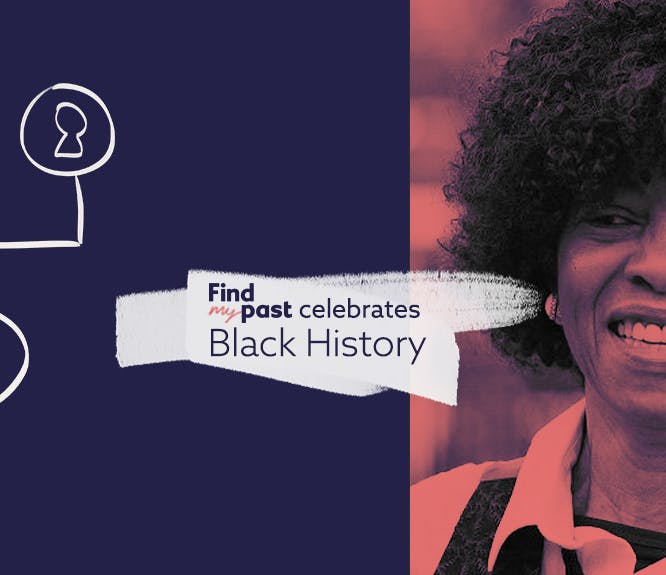What does it take to bring the 1921 Census of England & Wales online?
4-5 minute read
By Mary Mckee | November 3, 2022
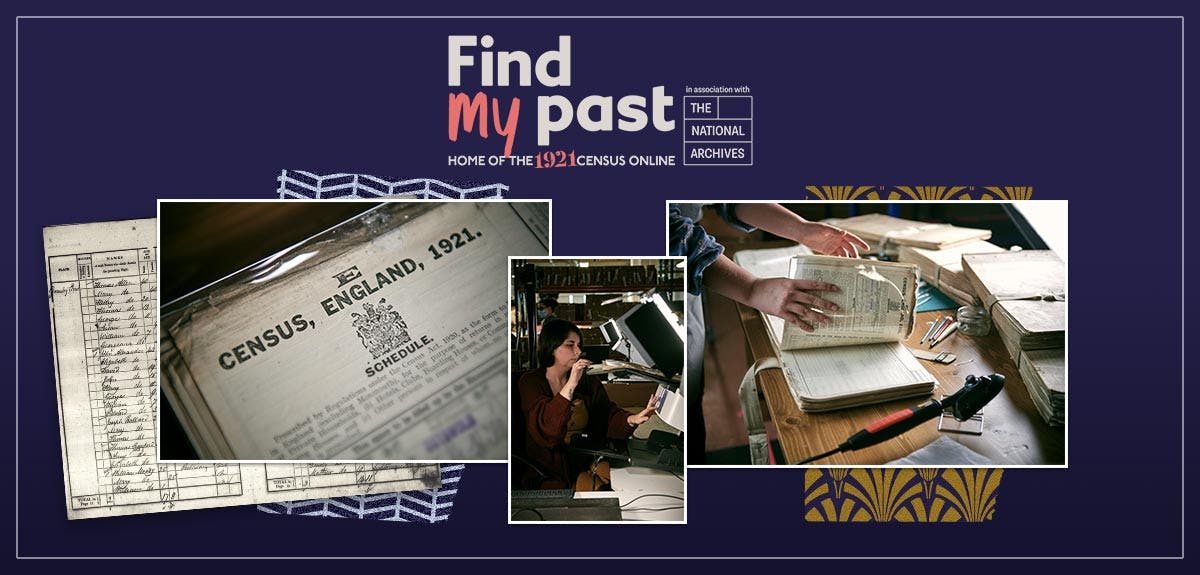
From the shelves of archives to your fingertips on any device, publishing the 1921 Census of England and Wales online has been a mammoth task. Mary McKee explains every painstaking step our team of specialists has taken.
Our journey to preserve and digitise the 1921 Census of England and Wales started when Findmypast won the competitive tender published by The National Archives in 2018. We were thrilled to be chosen to complete the challenging but exciting task of bringing the 1921 Census online for the first time. The Census is an amazing window into the past, giving us a snapshot of 38 million lives in England and Wales on one night in the summer of 1921. Now, with our Premium subscription, you can delve in to the most comprehensive record of life in England and Wales ever released to your hearts content.
Preserving and digitising old family records is no mean feat. Throughout the course of the project, over 500 people plus our partners at The National Archives and the Office for National Statistics worked on digitising the census records.
The true start to this incredible journey was on 19 June 1921 when 38 million people across England and Wales took part in the national census. Almost a century later, Findmypast was given the opportunity to bring the Census online.
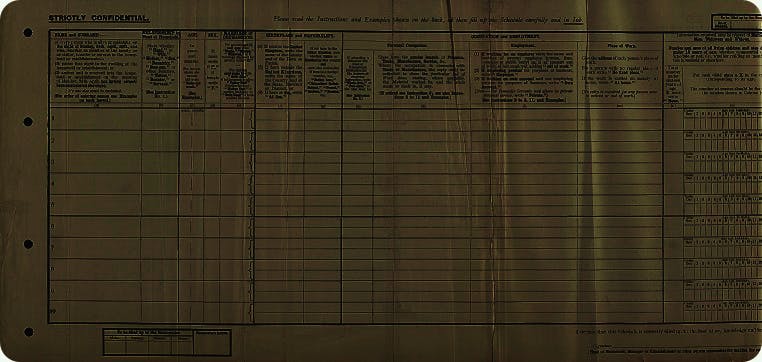
Our ancestors were given a blank form like this to complete on Sunday, 19 June 1921.
The census is stored in 28,000 volumes or pieces. Each piece contains between 300 to 600 schedules. For the entire digitisation project, they were housed at a specially designed studio at the Office for National Statistics in Titchfield Hampshire, where they occupied 1.6km of storage shelving.
There are approximately 8.5 million household schedules. If we laid every census schedule next to each other they would stretch across 4,675 kilometres, a similar distance between London and Boston.
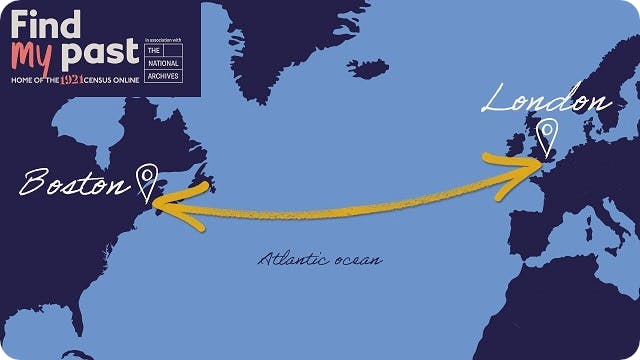
The whole process to digitise and preserve the census took three years to complete.
Preserving history
Digitising the census starts with our conservation team, including conservation technicians and qualified conservators. The team went through every single piece, schedule by schedule, assessing and preserving the documents. Their priority was to make sure the document was stable for digitisation and that we had exposed as much of the original handwriting as possible.
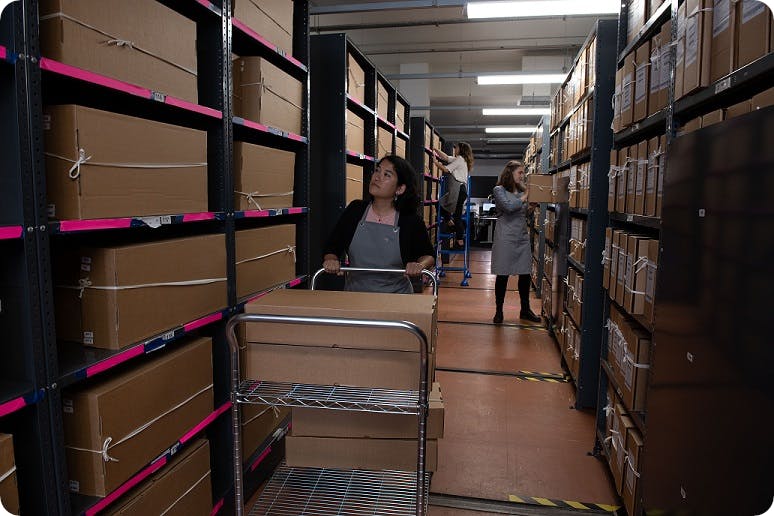
During their assessment, they removed dirt, flattened creases, repaired tears and identified mould. The technicians used Teflon bone or a heated spatula to flatten the creases and fine Japanese tissue paper to repair the tears. Tears can occur for a number of reasons but mainly because the folds have weakened. The original census form was folded into three and slipped through every door in England and Wales.
Mould cleaning was completed by qualified conservators. Mould occurs from water damage and we know from The National Archives' records that water damage occurred sometime before 1942. The mould was dormant, which means there was no risk of it spreading through the collection, but it needed careful cleaning to ensure your ancestors' handwriting is legible. Water damage can also cause pages to stick together. These needed to be carefully separated using sharp tools.

Another fun part of preserving 100-year-old documents is the interesting objects you find along the way. We discovered:
- 532 historic bugs
- 12 used matches
- 17 pencils
- 4 erasers
- Lots of tobacco flakes
- One 1910 Belgian coin
During their time with the schedules, the bugs enjoyed nibbling away at the edges of the documents.
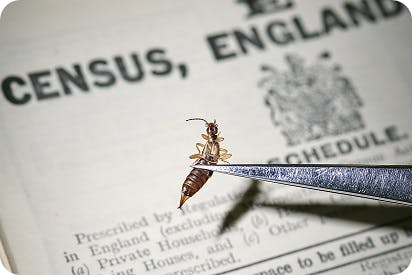
After the conservation team completed their assessments, the pieces were handed over to our scanning partners, Max Communications. Both teams worked in the same room and were in continuous consultation with each other. This was critical so that fragile mould-damaged pieces could be treated in the right way. The conservation team advised the scanning team on which documents need to be handled with care.
Bringing the 1921 Census online
The scanning team used two methods to digitise the census records. The first was a sheet-fed scanner that captures an image on both sides. The second was with an overhead camera on a rostrum. This is necessary when we have documents that are especially fragile.
Extra delicate pieces were placed into specially made polyester sleeves. During the project, we used over 87,000 polyester sleeves. Together the sleeves weigh over a ton and if they were stacked on top of each other they'd stand at 21.75 km high.
After digitisation, the pieces were returned to the conservation team. They again assessed the book, schedule by schedule, and placed it back in its exact order. The goal was to return the books to the same state we retrieved them. This could be the last time a person touches these census records for decades to come.
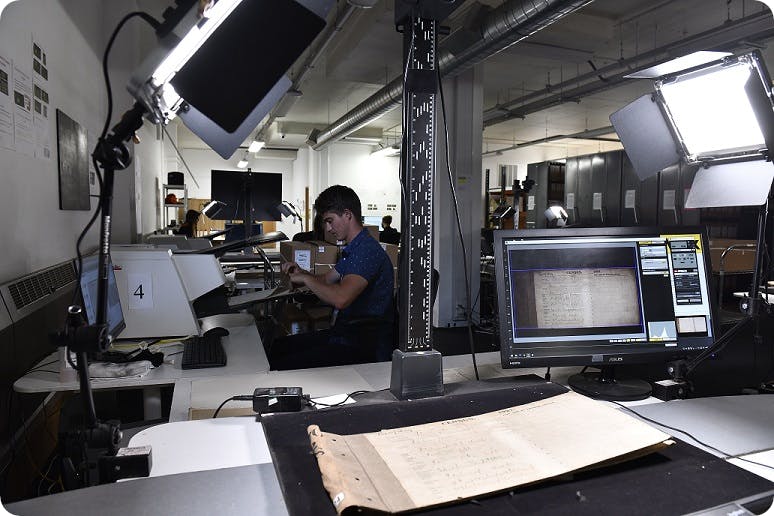
The digital images were split into three segments and sent to our transcription partner. We split the images in order to protect the security of the census data. Over 300 transcribers worked on the project. They typed every name, age, address, and occupation found in the documents.
After all this hard work, the 1921 Census is now finally open to the world, ready for you to explore the countless family stories, secrets and surprises that it holds.
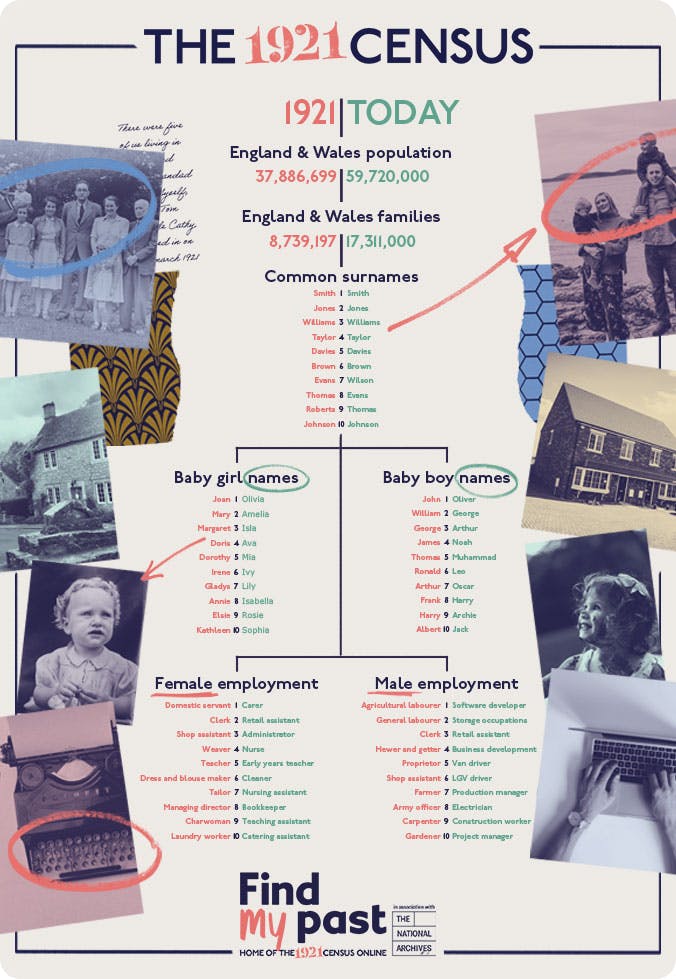
Discover 1921 versus 2021. View in more detail here.
Our first-class online experience will help find your family's records and the stories they reveal in seconds. To help you make the most of this precious record collection, here are 21 handy tips for exploring the 1921 Census, only available online at Findmypast.
Related articles recommended for you
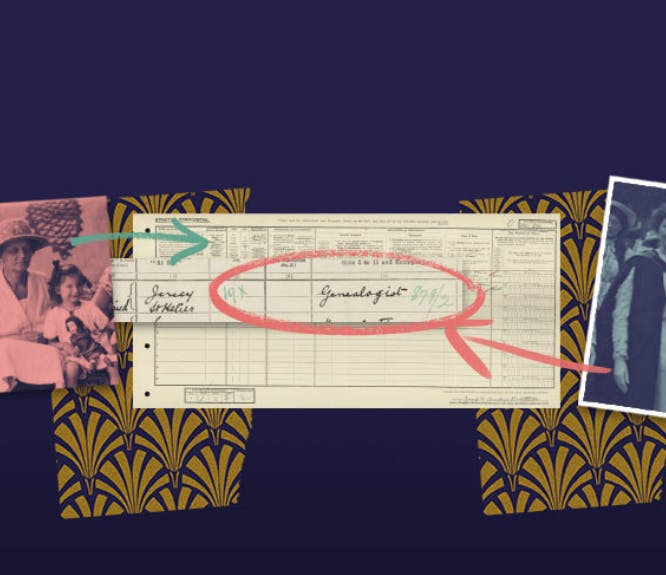
Genealogists in the 1921 Census of England and Wales: discover a profession that stands the test of time
History Hub
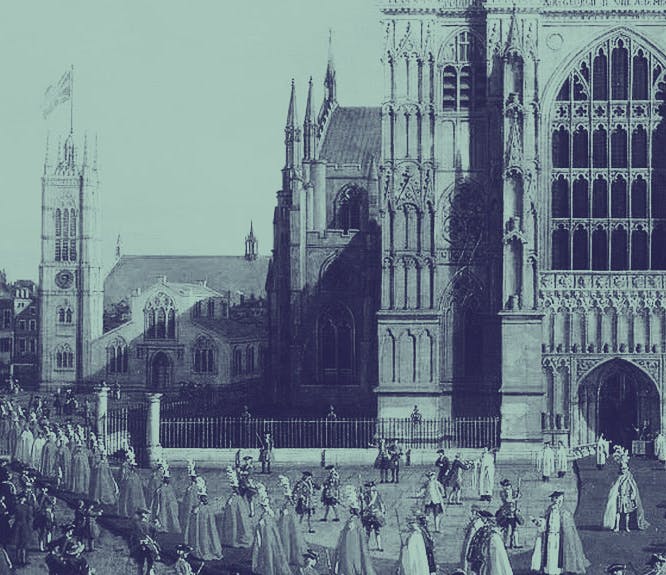
Knights of the Realm: Uncover your ancestors' great deeds
Family Records

6 must-read books for Women's History Month (and beyond)
History Hub
